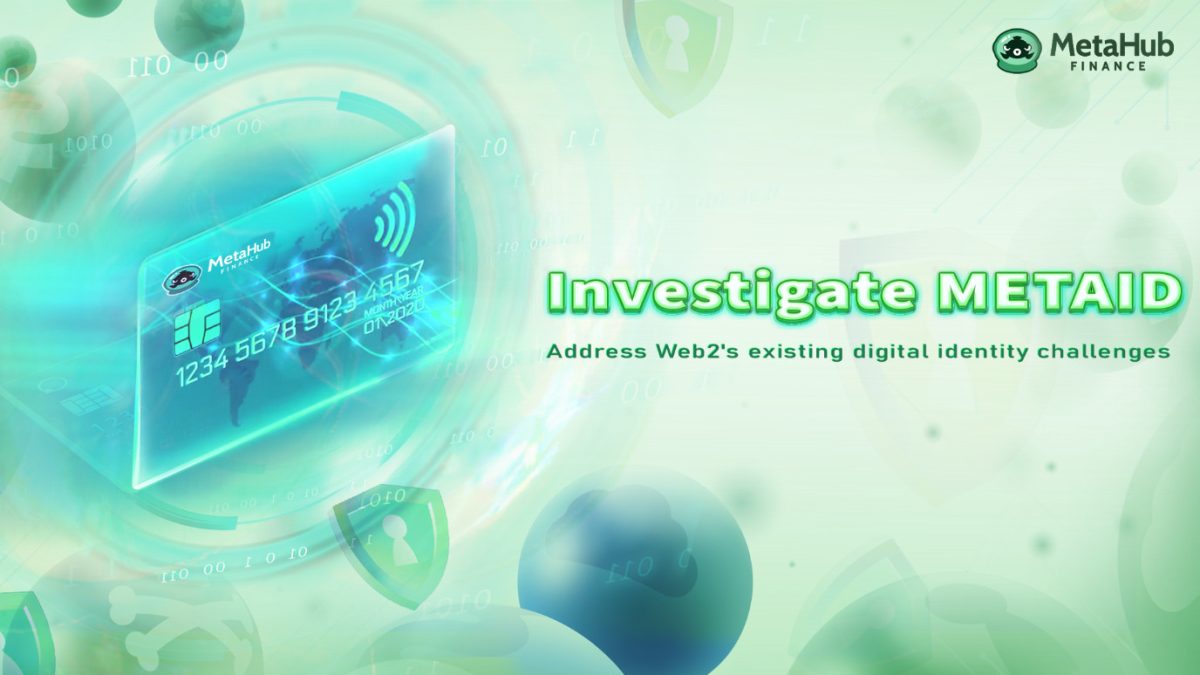Investigate METAID -Address Web 2’s existing digital identity challenges

Do we really know who we are online? In the era of Web 2.0, we’ve witnessed the rise of digital identities, data privacy concerns, and the challenges associated with sharing data between applications. Let’s delve into these pressing issues and explore how MetaHub’s groundbreaking MetaID is poised to address them.
1. The problems of digital identity in Web 2.0
1.1. Issues in Digital Identity
Since the advent of Web 2.0 (around 2005), forums, blogs, and social networks have given individuals a voice online. Any user can create and interact with content, thereby building a digital identity.
However, typically, you have multiple identities on the internet, one identity for each platform, and these identities cannot interact with each other. For example, if you want to change your display name or profile picture, you have to do it manually on each separate account.
Furthermore, there will still be cases where one person owns multiple unverified accounts, leading to limitations in digital identity.
1.2. Data Theft
Personal data associated with our accounts and the content we create are often owned by the platforms we use, typically controlled by one of the “Big 5” companies: Alphabet (Google), Amazon, Apple, Meta (Facebook), or Microsoft. These organizations can arbitrarily review our activities or render old content unrecoverable because that content is managed privately according to their algorithms.
1.3. Constraints on Data Portability Between Applications
In Web 2.0, moving data from one application to another is very difficult, if not impossible because Big Tech companies have created closed ecosystems. For example, we can publish the same content on all Meta services (Instagram, Facebook, Whatsapp) or use the same account for all Amazon services, but we cannot use the same login information for both services. Both are in competition, so they do not create a “bridge” to share information.
2. METAID -Address Web 2’s existing digital identity challenges
In this context, MetaID has emerged as a beacon of hope, based on a decentralized identity framework that’s characterized by its simplicity, security, transparency, and most importantly, governance by the individuals themselves. The burgeoning field of decentralized digital identity offers a promising solution to these longstanding challenges.
Join the MetaHub Platform, a digital world where you can obtain a MetaID, transforming you into a MetaCitizen. This status allows you to earn rewards by completing tasks, quests, or referring new users, thereby contributing to the platform’s expansion. The overarching goal of this developmental phase is to provide an immersive experience for end-users, facilitating their transition from Web 2.0 to Web 3.0.
By harnessing blockchain technology and distributed ledgers, SoulBound Token (SBT) serves as a citizen’s digital passport, certifying their unique identity and ownership rights. This blend of blockchain security and decentralization enhances the user experience, while allowing citizens to protect themselves from fraud and contribute to a credibility index within the ecosystem.
The dawn of MetaID heralds a new era in digital identity, one that is decentralized, secure, and user-centric, promising to address the persistent issues of the Web 2.0 world. As we journey toward Web 3.0, the path is illuminated by MetaID, offering a solution that prioritizes privacy, security, and individual control.
3. Conclusion
As we embrace the Web3 era, the adoption of decentralized digital identities like MetaID becomes not just a preference but a requirement. By making the choice to be a part of MetaHub’s digital realm, users become more than just MetaCitizens; they become pioneers in reshaping the landscape of digital identity. We move forward with unwavering commitment, ensuring that digital identities are no longer a challenge but a solution – one that is user-centric, secure, and poised to address the challenges of our digital future.
